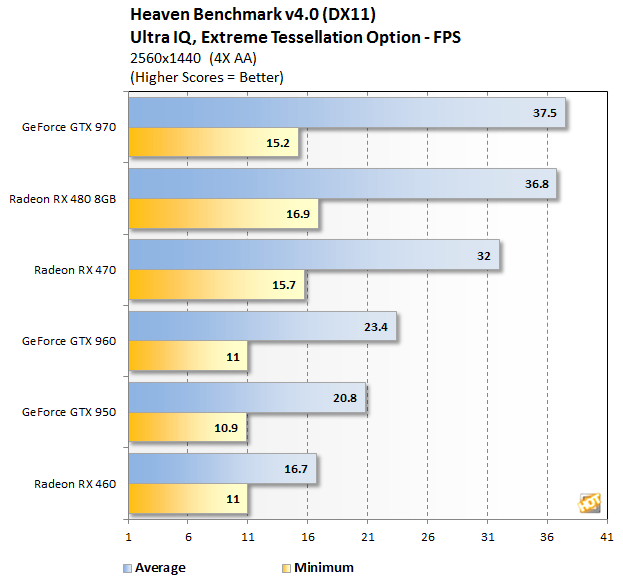AMD Radeon RX 460 Review: Polaris On A Budget
How We Configured Our Test Systems: We tested the graphics cards in this article on a Gigabyte X99 Gaming 5P motherboard powered by an Intel Core i7-5960X octal-core processor and 16GB of Corsair DDR4 RAM. The first thing we did when configuring the test system was enter the UEFI and set all values to their "high performance" settings and disable any integrated peripherals that wouldn't be put to use. The memory's X.M.P. profile was enabled to ensure optimal memory performance and the solid state drive was then formatted and Windows 10 Professional x64 was installed and fully updated. When the Windows installation was complete, we installed all of the drivers, games, and benchmark tools necessary to complete our tests.
|
| Hardware Used: Intel Core i7-5960X (3GHz, Octa-Core) Gigabyte X99 Gaming 5P (Intel X99 Chipset) Radeon R9 380X Radeon RX 480 Radeon RX 470 (ASUS STRIX) Radeon RX 460 (ASUS STRIX) GeForce GTX 960 GeForce GTX 950 16GB Corsair DDR4-2133 OCZ Vertex 4 Integrated Audio Integrated Network | Relevant Software: Windows 10 Pro x64 (10586) AMD Catalyst 16.8.1 NVIDIA GeForce Drivers v368.98 Benchmarks Used: Unigine Heaven v4 3DMark "Fire Strike" 3DMark "Time Spy" Thief MIddle-Earth: Shadow Of Mordor Ashes Of The Singularity Hitman 2016 Steam VR Performance Test FRAPS |
|
|
Unigine's Heaven Benchmark v4.0 is built around the Unigine game engine. Unigine is a cross-platform, real-time 3D engine, with support for DirectX 9, DirectX 10, DirectX 11 and OpenGL. The Heaven benchmark -- when run in DX11 mode -- makes comprehensive use of tessellation technology and advanced SSAO (screen-space ambient occlusion). It also features volumetric cumulonimbus clouds generated by a physically accurate algorithm and a dynamic sky with light scattering.


The Radeon RX 460 trailed the other cards we tested in the Unigine Heaven benchmark, with the settings we used. The GTX 950 was roughly 22% faster here.
|
|
The Radeon RX 460 put up better scores than the GeForce GTX 960 and 950 in 3DMark Fire Strike, but the individual results are more interesting than the overall scores. The RX 460 trails in GT1, but finishes somewhat ahead in GT2. And due to the algo Futuremark uses to calculate the final score, the RX 460 ends up with the better end result.










